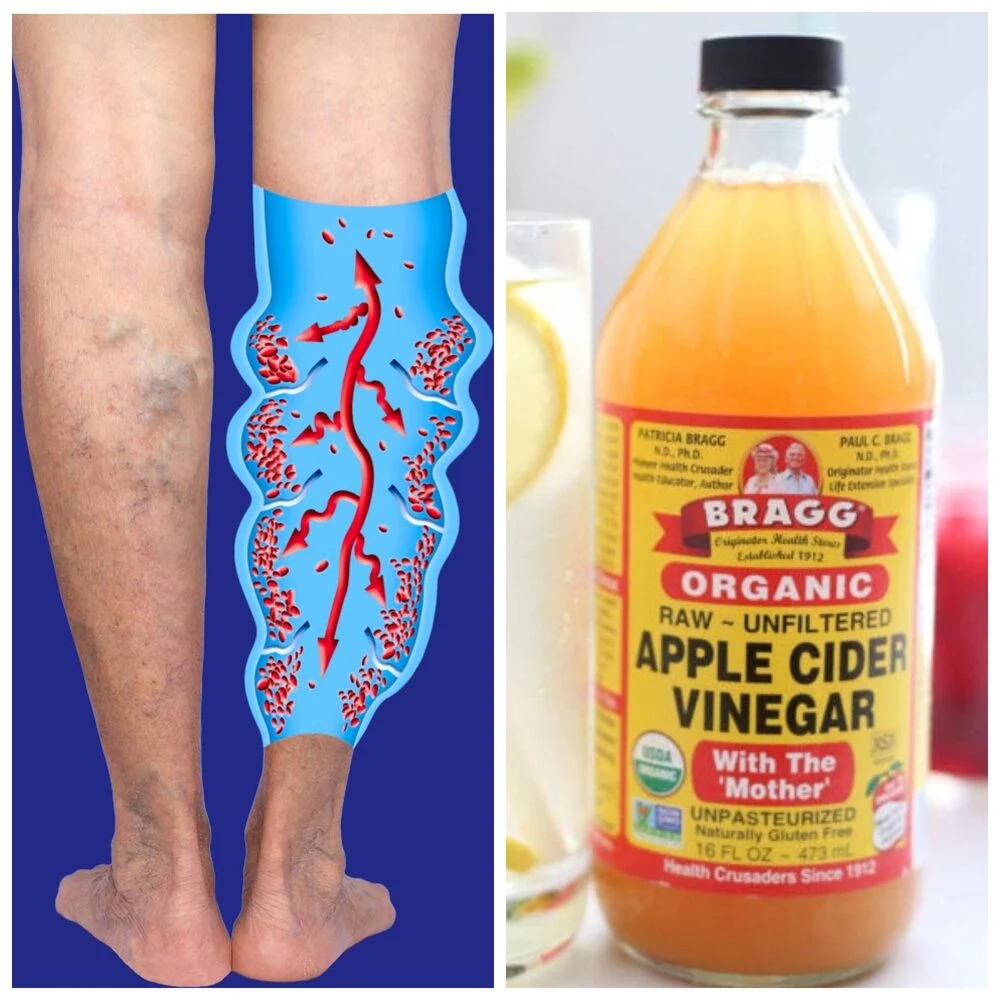Understanding Varicose Veins
Varicose veins are swollen, twisted veins most commonly appearing in the legs. They are caused by weakened vein valves, leading to blood pooling and increased venous pressure. Symptoms include leg heaviness, pain, cramping, itching, and visible bulging veins.
Causes of Varicose Veins
The main cause is valve malfunction in veins. Factors contributing include:
- Genetics: A family history increases risk.
- Age: Veins weaken over time.
- Pregnancy: Extra abdominal weight increases leg pressure.
- Obesity: Excess weight strains veins.
- Occupation: Long periods of standing or sitting hinder blood flow.
Symptoms
- Swollen, twisted, or blue veins
- Heaviness or aching in the legs
- Cramping, especially at night
- Itching or tingling sensations
- Swelling in ankles or feet
Home Remedies and Lifestyle Tips
1. Apple Cider Vinegar
Massaging apple cider vinegar on affected areas may improve circulation and reduce swelling.
2. Exercise
Low-impact exercises enhance blood flow and strengthen leg muscles:
- Cycling
- Swimming
- Walking
- Yoga
3. Horse Chestnut Seed Extract
Contains Aescin, which strengthens vein walls and reduces inflammation. Apply gel externally twice a day.
4. Dietary Adjustments
Reduce sodium intake to prevent water retention and increase potassium-rich foods:
- Potatoes
- Lentils
- Green vegetables
- Almonds
- Fish like salmon and tuna
5. Garlic Therapy
Garlic improves circulation and reduces inflammation. Combine garlic juice with olive oil and massage onto veins daily.
6. Ayurveda: Brahmi & Jasad Bhasma
Bacopa monnieri (Brahmi) supports vein health. Combining with mineral supplements like Jasad Bhasma may strengthen veins and prevent blood clots.
7. Leg Elevation
Elevate legs above heart level for 15-20 minutes daily to improve blood flow and reduce swelling.
8. Olive Oil Massage
Mix olive oil with vitamin E oil and gently massage onto affected veins twice daily to reduce discomfort and improve circulation.
Prevention Tips
- Avoid prolonged sitting or standing; move regularly.
- Exercise frequently to strengthen leg muscles.
- Wear loose clothing.
- Consume flavonoid-rich foods: grapes, cherries, apples, garlic.
- Avoid crossing legs for long periods.
FAQ – Varicose Veins Natural Remedies
What are varicose veins?
Varicose veins are swollen, twisted veins that usually appear in the legs. They occur when vein valves are weakened, causing blood to pool and veins to enlarge.
What causes varicose veins?
Common causes include genetics, aging, pregnancy, obesity, and occupations requiring prolonged standing or sitting.
What are the symptoms of varicose veins?
Symptoms include swollen, twisted, or blue veins, heaviness or aching in the legs, cramping (especially at night), itching, tingling, and swelling in ankles or feet.
What home remedies can help with varicose veins?
Remedies include massaging apple cider vinegar, regular low-impact exercise (walking, swimming, cycling, yoga), using horse chestnut seed extract, dietary adjustments to reduce sodium and increase potassium, garlic therapy, Ayurveda supplements like Brahmi, leg elevation, and olive oil massages.
How can varicose veins be prevented?
Prevention includes avoiding prolonged sitting or standing, exercising regularly to strengthen leg muscles, wearing loose clothing, eating flavonoid-rich foods (grapes, cherries, apples, garlic), and avoiding crossing legs for long periods.
When should I see a doctor about varicose veins?
Seek medical advice if varicose veins cause significant pain, swelling, skin ulcers, bleeding, or if you notice sudden changes in color or texture of your legs.

Comments